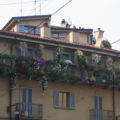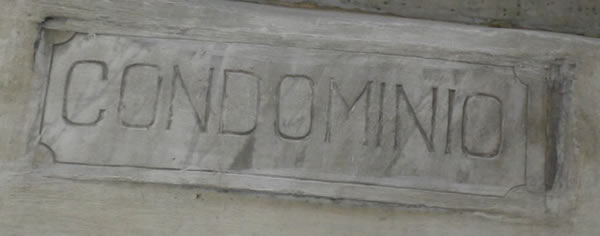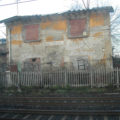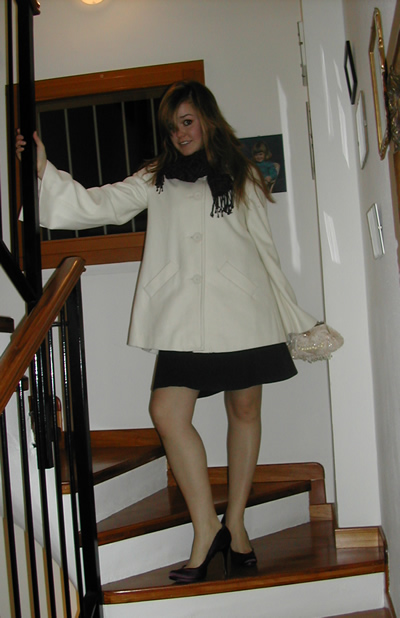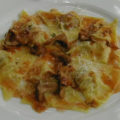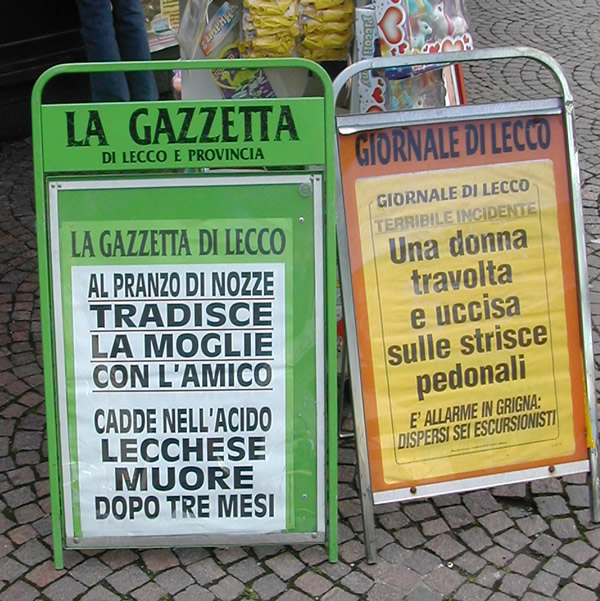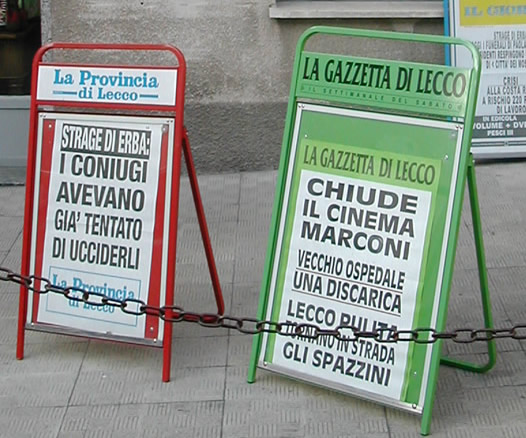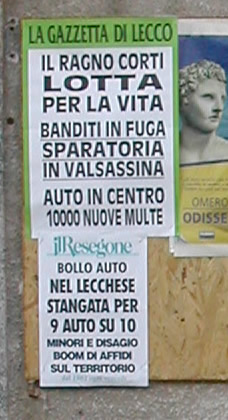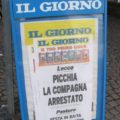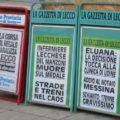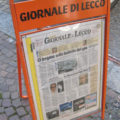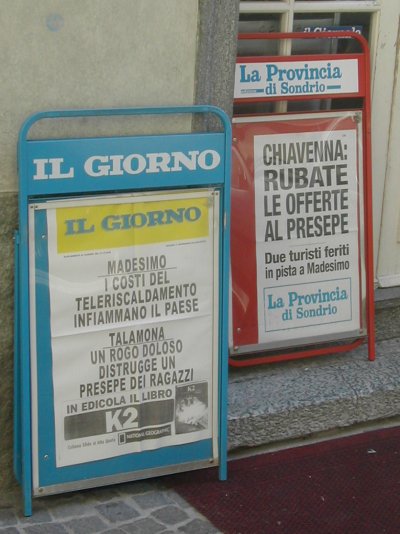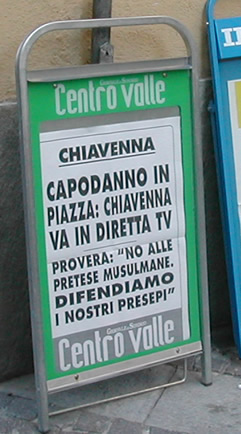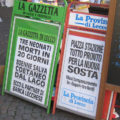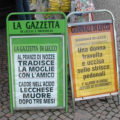When somebody asks “How are you?” my usual response is “Tired”. And that’s been my usual response for as long as I can remember. How did I get to this state? Let us review my typical day:
6:45 wake up, wake Rossella, turn on my computer, take a shower.
7:00 if it’s Monday or Friday (or I’m working from home), put in a load of laundry, because Mimma (our housekeeper) will be there to hang it to dry later.
7:05 start coffee, run a brush through my hair, put on mascara, get dressed, call Ross again, check email and headlines.
7:15 drink coffee, empty and/or fill dishwasher, clean stove and counters (no, I didn’t do it after dinner last night), blow dry my hair for 60 seconds (all it needs, for which I am thankful!).
7:30 out the door with Ross to catch the bus at 7:35.
NB: If Enrico is driving down to Lecco that morning to teach, move everything 15 minutes later – he drops Ross near school and me at the train station on his way to his office.
~7:55 arrive at the station, grab a newspaper, go sit on my train, which starts from Lecco, so it’s waiting in the station. This is important – it means that I don’t have to stand on the platform, exposed to all weathers, and I don’t have to fight for a seat. In fact, this train is so empty that the seat in front of me almost always remains unoccupied, so I have room to stretch my legs.
8:17 train leaves. During the trip, I read, write, work on my website, etc.
9:10 When on time, train arrives in Milan. Take the metro to the office (two stops), walk the last two blocks, arrive around 9:25.
~10:00 first coffee break, preferably with one or more colleagues – depends who else needs the caffeine as urgently as I do.
~1:00 lunch with colleagues or friends – about 40 minutes, shorter when we eat in the office, longer when we go out.
5:30 leave the office to head home – metro back to Milan Central Station.
5:40 arrive at the station, 20 minutes before my train leaves, to ensure a good seat. I could probably arrive later, but by 5:40 I risk only finding seats where my knees will be jammed against those of someone sitting in front of me. By 5:50 I risk not finding a seat at all.
6:00 train leaves Milan, I call Enrico and/or Ross to find out who’s where, and what we need for dinner. During the train ride I read a book or The Economist, or articles from the day’s blogs and newspapers, saved on my laptop. Or I work on my website, or (occasionally) edit video.
6:50 train arrives in Lecco. Sometimes I meet Enrico on his way back from his office and get a ride home, more often I take the bus at 7:10, during the lighter parts of the year I may walk (40 minutes, all uphill – who needs a gym?). I may stop along the way to buy bread, milk, fruit, vegetables or whatever else we need at home.
7:30 arrive home (on the bus). Wash my face, turn on my computer again, start making dinner (or helping Enrico make it).
8:00 dinner
8:30 Clean up after dinner, other small stuff. In warmer months, Enrico (usually) or I water the garden.
9:00 leisure at last – Sometimes all three of us watch something together (“Desperate Housewives” is our latest obsession), other times we do our own separate things (in Ross’ case, homework, often with Enrico’s help).
10:30 or 11:00 crawl into bed, read or do crosswords til I can’t keep my eyes open
The waking-up-at-6:45 routine also applies to Saturdays, because Ross goes to school six days a week. Otherwise, weekends aren’t particularly routine. During warm weather I garden, sometimes we go somewhere, sometimes we have guests, etc. And I catch up on household stuff like (more) laundry.
I try to work from home one day a week, to spare myself the commute. Instead, I spend those four hours doing things like cook a non-rushed meal, get a haircut, catch up on whatever household, banking, etc. stuff has been neglected.
Is this an average day in Italy? For many people, yes. Some commute even further than I do, spending two hours or more just on the train so that they can live in, e.g., Sondrio, and work in Milan. They have their reasons: historical and family ties to a smaller town (where it’s also a lot cheaper to live), but the jobs are in Milan.
As for me, I swore I would never commute this way, but here I am, commuting – and very tired.



